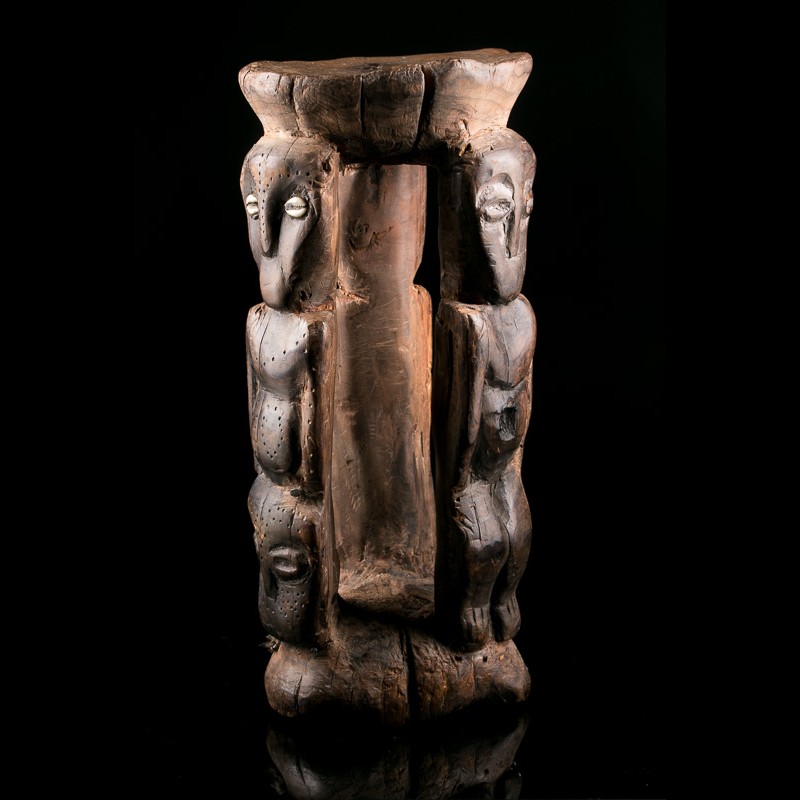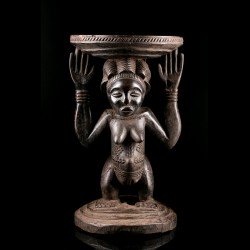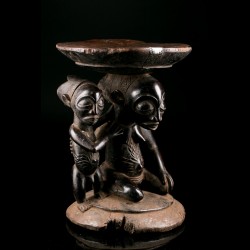















A kisumbi wooden stool displaying beautiful patina and wear. The stool is carved from a single piece of wood, the oval top is bowl shaped, and the body of the stool has been hollowed out leaving three supports in the form of standing female figures. The figures each have an elongated face with half closed lentoid shaped eyes. The arching brows extend down to form the nose. The bodies are solid and simply carved to effectively reveal the features. The arms hang to the side and the legs are thick and close together and rest on a domed base. To the stomach of the figures is a square recess, possibly for an inlay or the addition of scared substances.
The use of stools in many African societies went beyond mere utilitarian function. They in fact symbolize status, power, and prestige, particularly being emblems of political, judicial and social leadership. They are often the most important piece of regalia owned by a chief. For the Lega people stools are also associated with the Bwami, a society who regulate the spiritual life of the Lega and who are responsible for the initiation ceremonies. The Bwami have five levels of initiation and at each stage stools are used to demonstrate the high level rank of initiates within the most senior levels. The supporting caryatids of some of the stools display simple, abstract forms that are believed to represent the initiate as being “unformed” until they have completed the ceremonies. The cavities in the stomachs of the figures of this stool could well have contained sacred substances associated with the Bwami society.
Data sheet
You might also like

A kisumbi wooden stool displaying beautiful patina and wear. The stool is carved from a single piece of wood, the oval top is bowl shaped, and the body of the stool has been hollowed out leaving three supports in the form of standing female figures. The figures each have an elongated face with half closed lentoid shaped eyes. The arching brows extend down to form the nose. The bodies are solid and simply carved to effectively reveal the features. The arms hang to the side and the legs are thick and close together and rest on a domed base. To the stomach of the figures is a square recess, possibly for an inlay or the addition of scared substances.
The use of stools in many African societies went beyond mere utilitarian function. They in fact symbolize status, power, and prestige, particularly being emblems of political, judicial and social leadership. They are often the most important piece of regalia owned by a chief. For the Lega people stools are also associated with the Bwami, a society who regulate the spiritual life of the Lega and who are responsible for the initiation ceremonies. The Bwami have five levels of initiation and at each stage stools are used to demonstrate the high level rank of initiates within the most senior levels. The supporting caryatids of some of the stools display simple, abstract forms that are believed to represent the initiate as being “unformed” until they have completed the ceremonies. The cavities in the stomachs of the figures of this stool could well have contained sacred substances associated with the Bwami society.

